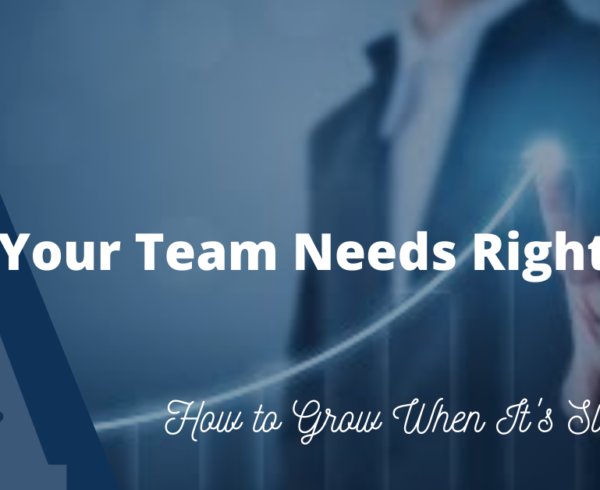As the work environment continues to change, whether through natural development of technology or due to the recent changes due to the global pandemic, one of the most critical challenges that face organizations is developing leaders with the necessary skills to succeed in that climate. In 2012, members of the ATD Forum explored many ideas related to the theme of “Enhancing Executive Global Leadership Skills” as part of their inaugural workshop for members residing in India. Their research included investigating the intricacies of what global leadership accounted for: what is unique about it, what the major challenges are, what keep competencies are needed, and what learning strategists need to focus on for developmental experiences.
This project with a belief that global leaders need specific leadership development because of more complex challenges created by differing cultures, time zones, and the need to collaborate and build alliances across geographic distances. However, due to the pandemic causing many organizations are now managing workers in both their physical stores and at home, or some other reason that employees are not working in person.
One common denominator within the mix of work configurations is the effect of leadership mediated via technology. To increase the understanding of the concept, ATD conducted a poll where respondents were asked to identify critical skills for leaders in a virtual work environment, and how they were different from leading in a collocated environment. Here are those responses for the most critical leadership skills for all leaders are:
- establish and meet metrics for work projects and goals
- be extremely clear with goals and directions with a constant focus on the big picture
- work with a high degree of complexity
- promote organizational commitment
The critical skills that are considered the most different in leading a virtual environment include the ability to:
- use process facilitation skills for meetings
- monitor team progress over time
- balance work and life based on 24/7 accessibility
- establish and maintain trust in a diverse environment with multiple cultures
To delve further into how to design for leadership experiences, the Forum held interviews and discussions with members that revolved around three questions:
- What is the extent and mix of leaders relying on technology?
- What are the greatest challenges for leaders when work is in a virtual environment?
- What are best practices for developing the requisite skills needed to effectively lead in a virtual environment?
Who Works Virtually?
Work using a virtual approach appears in almost all organizations but in various forms, from simply one person working remotely to the entire office collocated. Now due to the pandemic, many businesses, large and small, have increased their virtual employee presence. For some it was the only way to stay open and have some form of revenue for their business. Others were experimenting or contemplating having a remote worker before, and now had a perfect opportunity to do so. Whatever the reasoning behind it, hiring remote workers is no longer the “odd man out” in business scenes.
The Biggest Challenges
It may, at first glance, seem like a dream come true to work in the comforts of home or the local coffee shop and never see the boss. However, satisfaction fluctuates wildly among virtual workers.
In a large Forum survey of virtual team members, 46 percent of respondents report a sense of isolation due to a lack of face-to-face contact with team members. With Zoom and other forms of video-meetings becoming another common scene in businesses over the past year, this trend may go down slightly, but will always remain. For those who enjoy it, working virtually can never supersede face-to-face interactions.
All interviewees agree that many of the leadership skills are the same, but they are executed differently in a virtual environment. One interviewee reported, “Leadership is leadership. Being authentic, connecting with others, promoting inclusiveness, networking, and all of the interpersonal skills that build relationships and trust are always important.” In a virtual environment, “the actions associated with these skills must be deliberate and intentional. Thus, leaders need a defined strategy for doing and using the skills along with actions for execution, as well as a way to measure results.”
Early research on virtual leaders reveals a similar conclusion. A 2005 article in The Leadership Quarterly found that leaders at a distance need to work harder at relating to associates’ needs and aspirations to have the same level of positive impact that they would close up.
Look at virtual leadership from a leader’s perspective and the challenges increase. “Leaders must reach out and check in more frequently in a virtual environment. These personal connections build trust and relationships, but do not just happen. They are designed, planned for, and very intentional,” said one interviewee.
“Planned,” “disciplined,” “deliberate,” and “intentional” were the words used repeatedly when describing the differences between leading in a collocated environment and a dispersed environment. One item discussed was the ease of formal and informal check-ins and face-time leaders can have with their collocated team members-through meetings, in the hallways, by the coffee maker, and in the parking lot. “The challenges for a leader to create a sense of connectedness in a distributed work environment are huge, especially trying to maintain a sense of unity and wholeness.”
For some leaders the ability to manage distance appears to be less of a challenge now than when they first started, especially that some have been leading virtual team members since even before the pandemic. It may be that the negative impact of distance is reduced over time.
Best practices for leadership training for virtual employees
Communications: Communication skills are the top-rated skill to include in leadership development. This includes a variety of media formats such as phones, email, instant messaging, virtual media, web conferences, and Zoom. Training should mirror the virtual work.
Another component of communication is the frequency of discussions. In collocated teams, it is the leader’s responsibility to keep everyone on the same page and to check in often. Team member accountability for participation and engagement also is critical when working from a distance.
Additionally, listening is important to successful teams. However, listening without visual clues involves a whole new skill set. Participants stress the importance of leaders modeling the behavior that they expect in their teams. Leaders have a large role to play in designing opportunities for all team members to be heard and to be engaged. This means extensive use of questions to increase understanding and to offset the lack of visual information.
Team building: An initial face-to-face meeting comes up time and again as a way to build a team early on. This establishes trust and helps promote engagement and synergy. Many of the interviewees also suggest annual or semiannual face-to-face meetings. However, this is not always possible.
An understanding of virtual team dynamics is critical for leaders and team members to be effective. Organizations need to provide realistic budgets to promote the development of higher levels of performance and to put a premium on understanding the signs of low trust in virtual environments so that they can be addressed.
Other team building activities reported include:
- regularly scheduled celebrations that range from traditional monthly “hail and farewells” to baby showers
- extensive use of social media such as Yammer, Jive, Adobe Connect, and open source platforms
- frequent in-service orientations via Zoom or Skype
- fun and creative reconnecting activities as part of scheduled meetings to have members get familiar with and associate a voice with a person
Protocols: Teams need to establish ground rules or protocols that set the tone for a successful team and help to build and maintain trust. Clear, consistent, and detailed protocols that revolve around goals, deadlines, technology etiquette, and cultural norms appear necessary. Up-front guidelines for the work and the expected goals typically results in fewer pitfalls later in the process.
Leading from a Distance
All leaders need a basic understanding of what it means to lead effectively in a complex and changing environment. but there is something elusive about leading from a distance.
While at a first glance it may seem that all the same leadership skills are needed, it may be that leaders in a virtual environment need just a little more of everything: more knowledge of technology, more knowledge on how to work with team dynamics, stronger communication skills, and of course, a little more patience.
Virtual work and learning environments with dispersed teams are here to stay, so finding ways to work effectively to harness the collective energy of these teams is critical to the success of organizations for now and in the future. But for learning leaders responsible for creating experiences and content for enabling leaders to gain skills for these changes, the challenges may be even greater.
Original article created by Donna Dennis, Deborah Meola, and MJ Hall on 2/8/13.













